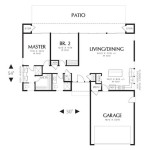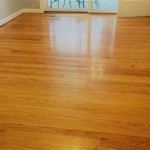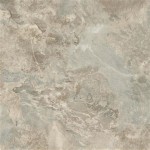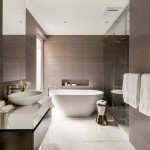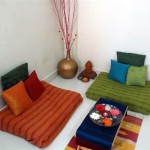Understanding Floor Plans with Interior Photos: A Comprehensive Guide
Floor plans and interior photos are essential tools in various fields, including real estate, architecture, interior design, and construction. They provide a visual representation of a space, enabling a comprehensive understanding of its layout, dimensions, and aesthetic potential. This article aims to explore the significance of floor plans paired with interior photos, highlighting their utility and the information they convey.
The combination of a floor plan and interior photography offers a significantly richer understanding compared to either element viewed in isolation. A floor plan, being a scaled diagram of a room or building viewed from above, illustrates the spatial relationships between different areas. It shows the placement of walls, doors, windows, and fixed elements like plumbing fixtures. Interior photos, on the other hand, capture the visual aspects of a space, showcasing finishes, furniture arrangements, lighting, and overall ambiance. Together, they provide a powerful resource for visualizing and planning within a specific environment.
Key Advantages of Utilizing Floor Plans with Interior Photos
The integration of floor plans and interior photos yields numerous benefits, enhancing communication, facilitating decision-making, and streamlining project workflows. These benefits are apparent across various sectors, from residential real estate to commercial development.
Enhanced Visualization and Comprehension: Floor plans alone can sometimes be difficult to interpret for individuals unfamiliar with architectural conventions. Similarly, interior photos, without the context of a floor plan, can present a disjointed view of the space. When combined, the floor plan provides a framework for understanding the location and orientation of each photograph. This allows viewers to easily situate themselves within the overall layout and appreciate how different areas connect. The interior photos then bring the floor plan to life, revealing the textures, colors, and lighting that define the space's character. This holistic approach leads to a more complete and nuanced understanding of the property.
Improved Communication and Collaboration: Clear communication is crucial in any project involving spatial design or construction. Floor plans with interior photos serve as a common language, bridging the gap between different stakeholders. Architects can use them to effectively convey their design concepts to clients. Real estate agents can leverage them to attract potential buyers and provide a comprehensive overview of a property. Interior designers can use them to illustrate proposed layouts and material selections, ensuring that clients fully understand the intended aesthetic. By providing a shared visual reference, these tools minimize misunderstandings and facilitate smoother collaboration.
Facilitated Space Planning and Furniture Layout: Moving into a new home or renovating an existing space often involves careful planning of furniture placement and space utilization. A floor plan with interior photos provides a valuable resource for this process. The floor plan allows individuals to accurately measure room dimensions and determine the optimal placement of furniture. The interior photos offer visual cues about the style and scale of existing furniture, helping to ensure that new pieces are appropriately sized and aesthetically compatible. This combination allows for efficient space planning, minimizing the risk of purchasing furniture that does not fit or complement the overall design.
Applications Across Different Industries
The application of floor plans with interior photos extends across various industries, each leveraging the benefits in unique ways.
Real Estate: In the real estate sector, floor plans with interior photos are indispensable tools for marketing properties. They allow potential buyers to virtually tour a home, gaining a comprehensive understanding of its layout and features. This can significantly increase interest in a property and reduce the number of unnecessary in-person showings. Online listings that include both a floor plan and high-quality interior photos tend to attract more attention and generate more leads. The transparency provided by these visuals builds trust with potential buyers and helps them make informed decisions.
Architecture and Interior Design: Architects and interior designers rely on floor plans with interior photos throughout the design process. They use floor plans to develop and refine spatial layouts, ensuring that the circulation and functionality of the space meet the client's needs. Interior photos serve as a visual record of existing conditions, allowing designers to accurately assess the space and identify opportunities for improvement. During the design development phase, designers often create renderings that combine floor plans with photorealistic interior visuals to illustrate their proposed design concepts. This helps clients visualize the final product and provide valuable feedback.
Construction and Renovation: In the construction industry, floor plans with interior photos are essential for planning and executing projects. Builders use floor plans to understand the structural layout of a building and to coordinate the work of different trades. Interior photos can be used to document existing conditions before work begins, providing a reference point for ensuring that the finished product meets the design specifications. During renovations, floor plans with interior photos can help to identify potential challenges and to plan the phasing of the project. They also allow for monitoring progress and ensuring that the project stays on track.
Considerations for Creating Effective Floor Plans and Interior Photos
To maximize the effectiveness of floor plans and interior photos, several key considerations should be taken into account during their creation.
Accuracy and Clarity: The accuracy of a floor plan is paramount. Dimensions must be precise and clearly labeled to ensure that the plan is usable for space planning and construction purposes. The floor plan should also be free of clutter and extraneous information, focusing on the essential elements of the layout. Similarly, interior photos should accurately represent the space and avoid distorting the proportions of the room. Lighting should be carefully controlled to ensure that colors and textures are accurately rendered. Using professional photography equipment and techniques can significantly improve the quality and clarity of the images.
Visual Appeal and Composition: While accuracy is essential, visual appeal is also crucial for engaging viewers and conveying the aesthetic qualities of the space. Interior photos should be thoughtfully composed to highlight the most attractive features of the room. Utilizing natural light and incorporating elements of staging can enhance the overall visual impact. Consider the point of view from which the photos are taken, ensuring that the composition is balanced and aesthetically pleasing. Floor plans should also be visually appealing, using clear and consistent line weights and incorporating color or shading to highlight different areas.
Integration and Context: The value of floor plans and interior photos is maximized when they are presented together and integrated seamlessly. Ensure that the photos are clearly labeled and correspond to specific areas on the floor plan. Providing captions or descriptions that highlight key features or design elements can further enhance the viewer's understanding. Using interactive tools, such as virtual tours or 3D models, can provide an even more immersive and engaging experience. By presenting the floor plan and interior photos in a unified and contextualized manner, you can create a powerful visual resource that effectively communicates the essence of the space.
In summary, floor plans coupled with interior photos are potent tools for visualising and communicating about spaces. Their value stretches across various industries, aiding in informed decision-making and seamless project execution. By focusing on accuracy, visual appeal, and seamless integration, professionals can take full advantage of the combined power of these visual aids.

Create Professional 2d And 3d Floor Plans

Create Professional 2d And 3d Floor Plans

Gorgeous Guest House Floor Plans Interior Design Ideas Alisha Taylor

Create Professional 2d And 3d Floor Plans

10 Important Things You Should Know Before Designing A House Plan

Create Professional 2d And 3d Floor Plans

Gorgeous Guest House Floor Plans Interior Design Ideas Alisha Taylor

What Interior Designers Do Floor Plans Seabaugh Interiors

3d Floor Plans Renderings Visualizations Fast Delivery

Interior Design Floor Plan Before After Carol Reed Nova Scotia Designer

